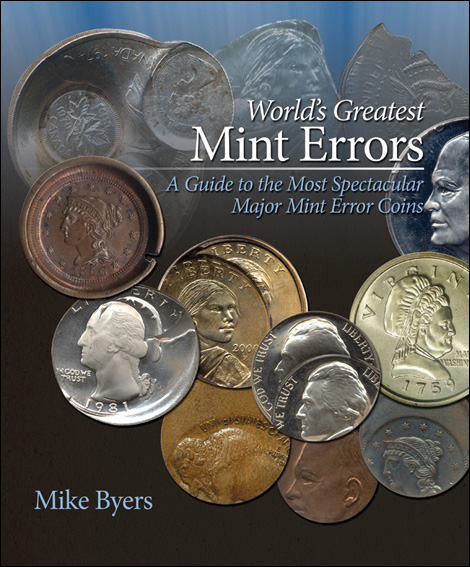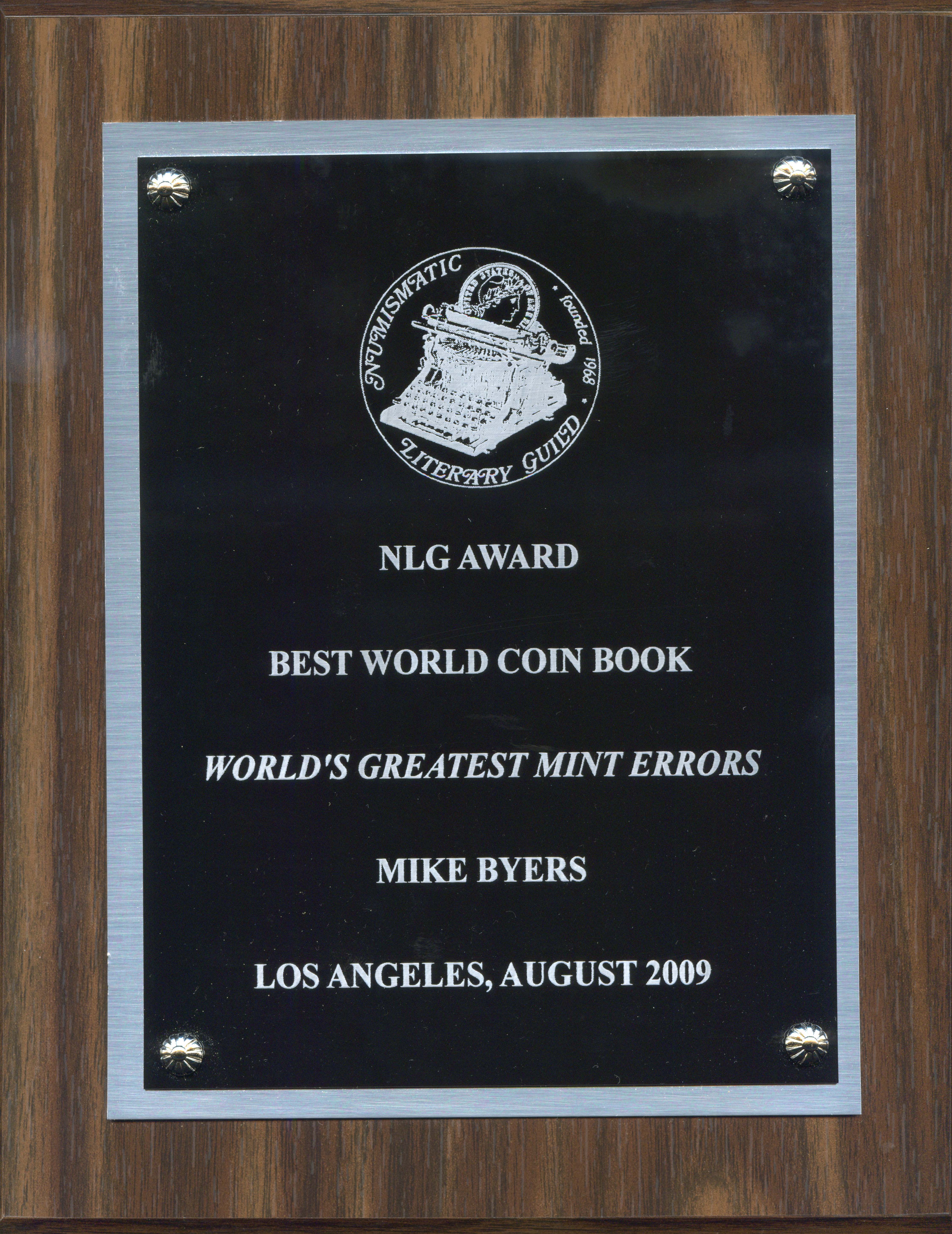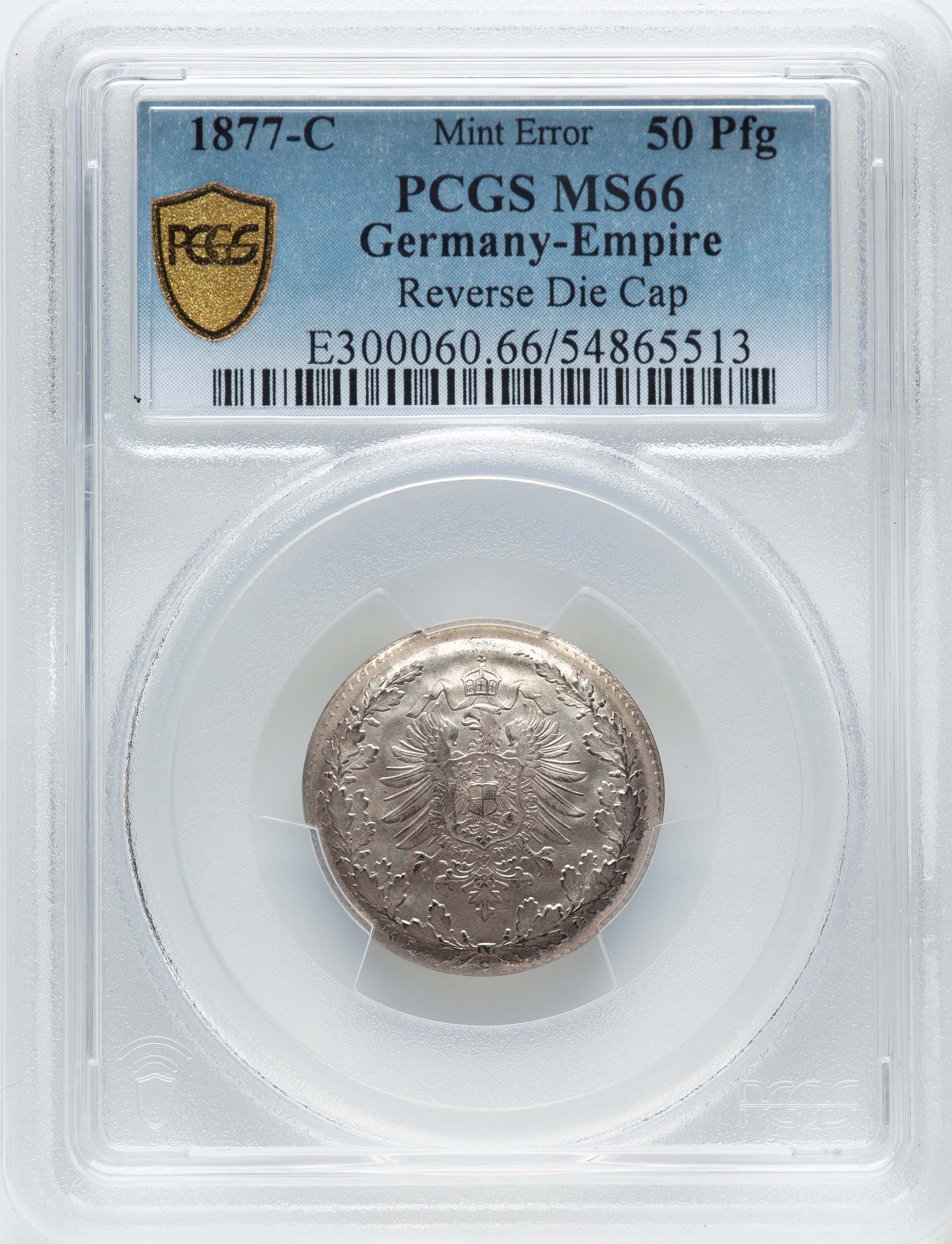

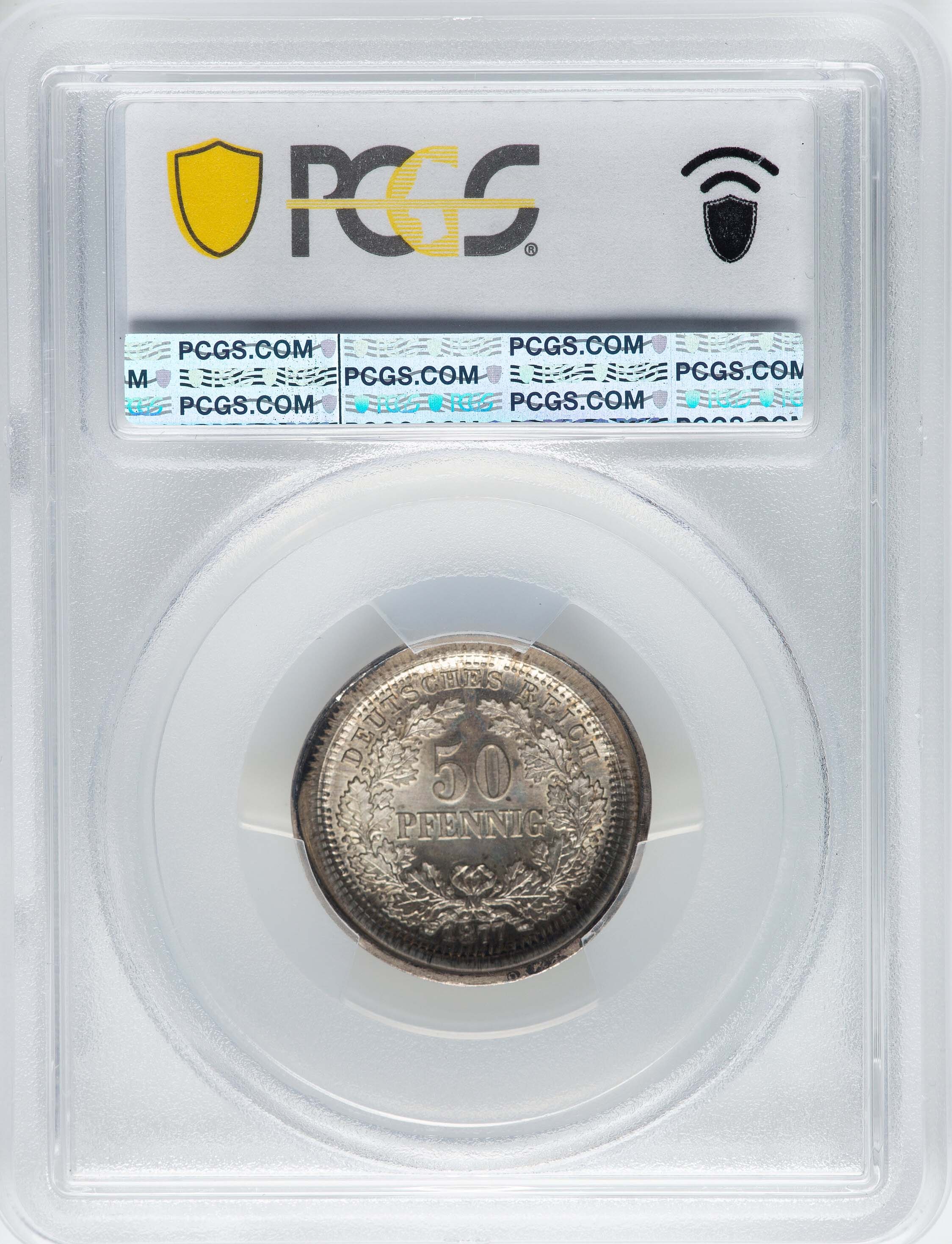
 This is a unique Silver German die cap. It is dated 1877, was struck at the Frankfurt Mint and is in gem mint state condition. There are a couple of German die caps from German States known, but they are in copper and on smaller denominations. Additionally, there are a few known German die caps from 1900 to 1923 from the German Empire and the Weimar Republic, but these are in the base metals of copper, zinc and aluminum.
This is a unique Silver German die cap. It is dated 1877, was struck at the Frankfurt Mint and is in gem mint state condition. There are a couple of German die caps from German States known, but they are in copper and on smaller denominations. Additionally, there are a few known German die caps from 1900 to 1923 from the German Empire and the Weimar Republic, but these are in the base metals of copper, zinc and aluminum.
 Although designated as a reverse die cap by PCGS, this is actually a deep obverse die cap. In the 35 years that PCGS and NGC have certified die caps, the use of the terms obverse and reverse is inconsistent. Sometimes it is referring to the design of the coin, other times it is referring to the placement of the die; hammer die (top die) or anvil die (lower die).
Although designated as a reverse die cap by PCGS, this is actually a deep obverse die cap. In the 35 years that PCGS and NGC have certified die caps, the use of the terms obverse and reverse is inconsistent. Sometimes it is referring to the design of the coin, other times it is referring to the placement of the die; hammer die (top die) or anvil die (lower die).
 This unique Silver 50 Pfennig is a deep obverse die cap with the wreath/date design. If this were a reverse die cap, that cupped the anvil die (lower die) it would have flattened out as it expanded. A normally struck silver 50 Pfennig is 90% silver, weighs 2.77g, and has a diameter of 21mm. This much larger 50 Pfennig expanded in size as it cupped the obverse die (hammer die) and brockaged multiple planchets with the eagle design.
This unique Silver 50 Pfennig is a deep obverse die cap with the wreath/date design. If this were a reverse die cap, that cupped the anvil die (lower die) it would have flattened out as it expanded. A normally struck silver 50 Pfennig is 90% silver, weighs 2.77g, and has a diameter of 21mm. This much larger 50 Pfennig expanded in size as it cupped the obverse die (hammer die) and brockaged multiple planchets with the eagle design.
 This is a fantastic and unique German Empire deep die cap on a silver 50 Pfennig. This die cap belongs in a collection of mint errors or German coinage.
This is a fantastic and unique German Empire deep die cap on a silver 50 Pfennig. This die cap belongs in a collection of mint errors or German coinage.
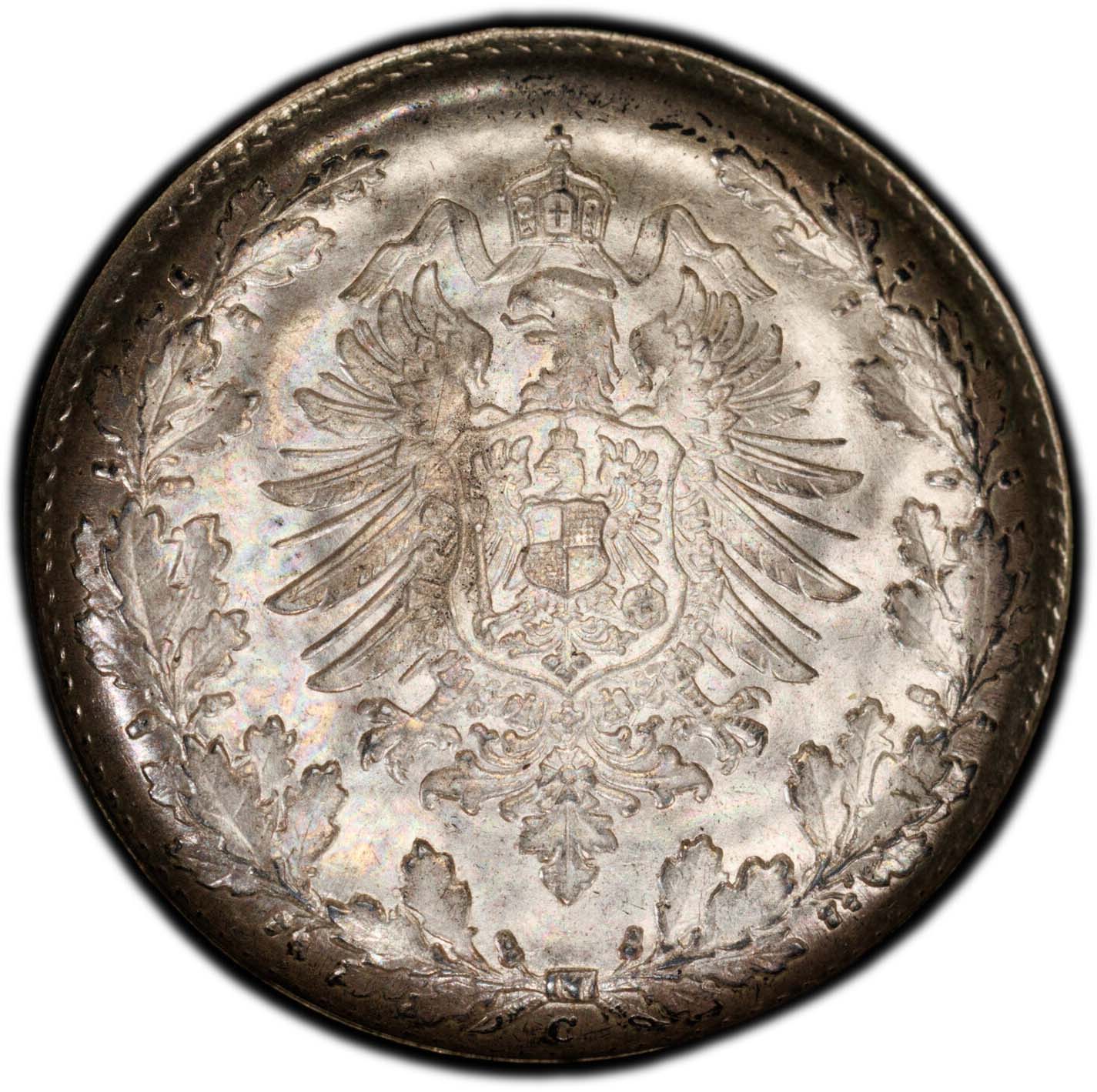
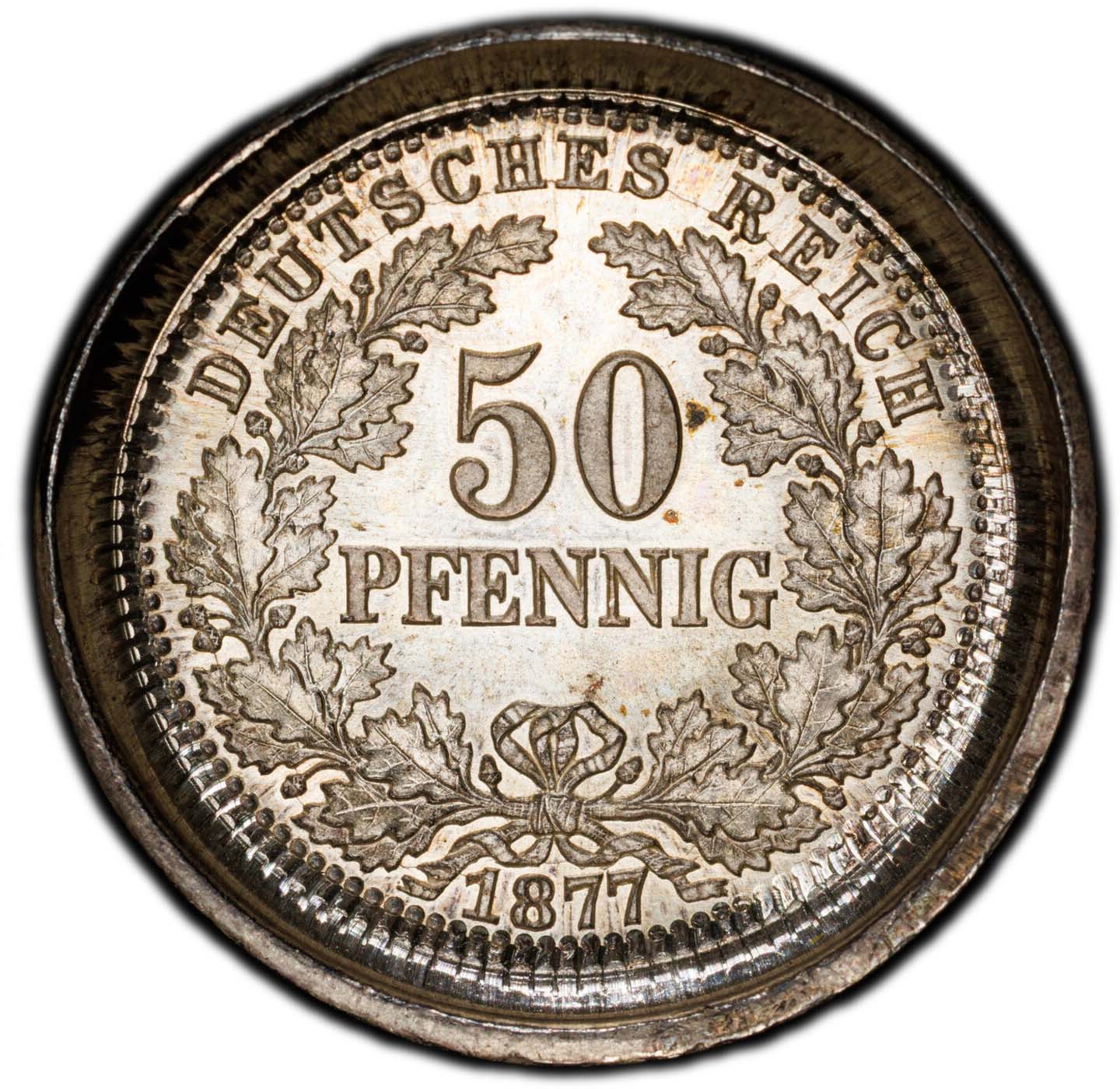
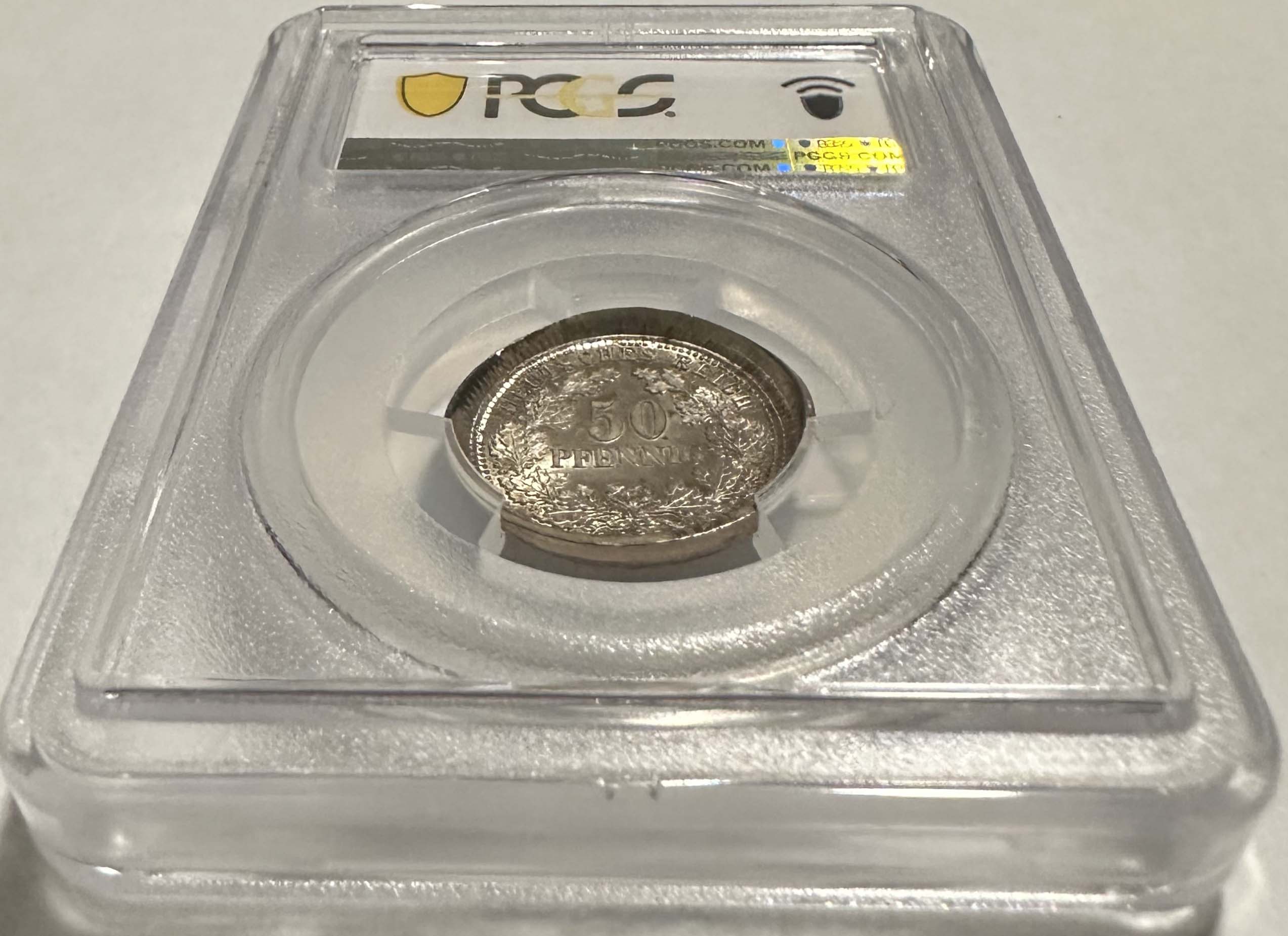
Featured on the cover of
Mint Error News Magazine Issue 85:
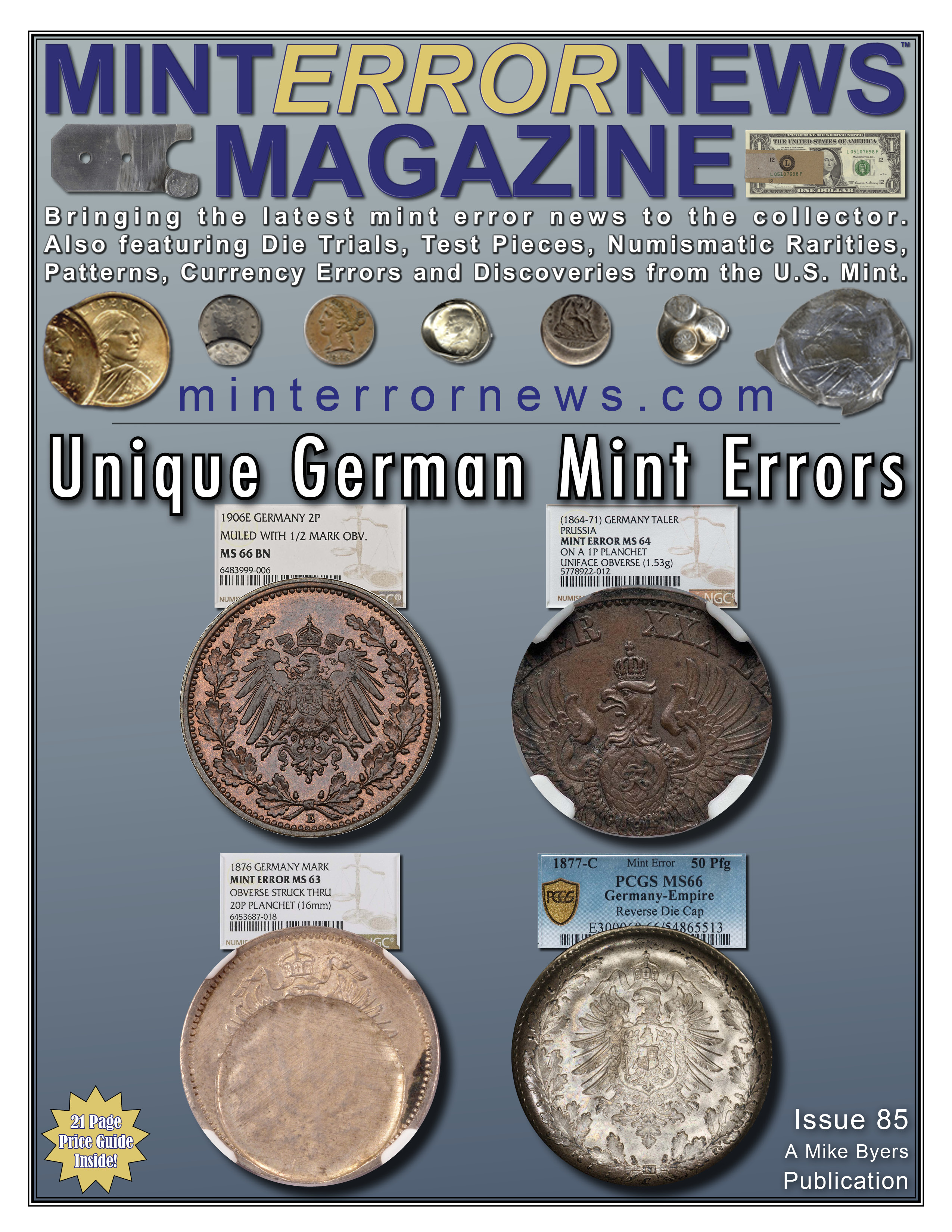
Die Caps are featured in my
NLG Award winning book,
World's Greatest Mint Errors.
